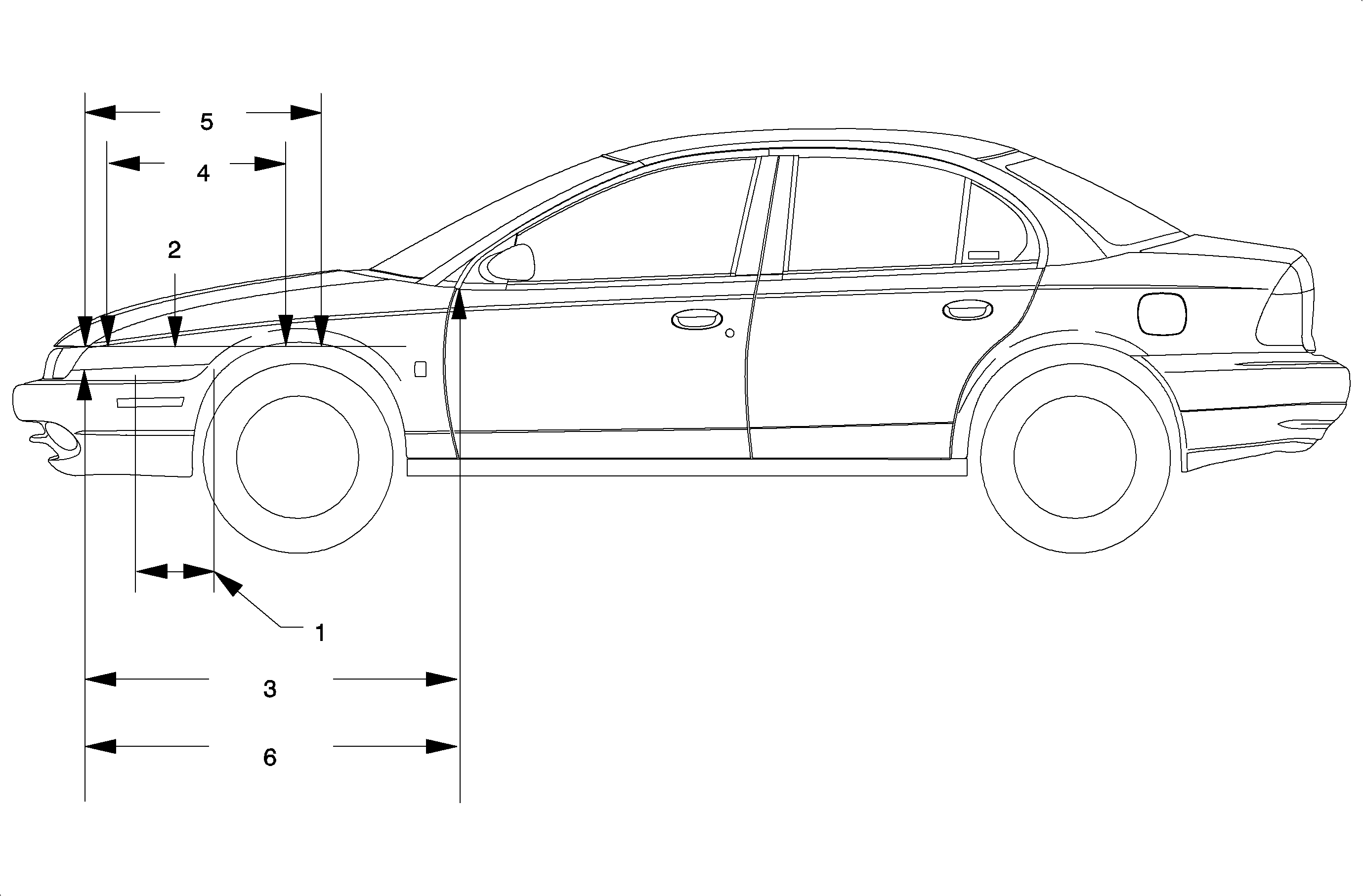

For best results, light color primers or sealers should be used under the base
white coat.Important
1998 Saturns with pearl white paint
The purpose of this bulletin is to familiarize the technicians with tri-coat paint repair. This information is required since pearl white tri-coat paint, finished with a pearl shell tri-coat system is available on 1998 vehicles.
Pearl White Paint Codes | ||
|---|---|---|
Sales Code | 16 | 16 |
WA Number | 287A | 287A |
Color Name | Pearl White Ground Coat | Pearl White Pearl Coat |
Refinish Manufacturer | ||
Akzo-Sikkens | SAT 287A | SAT 287A |
B.A.S.F. Diamont | 24489 | 24489 |
B.A.S.F. Glasurit | SAT 287A | SAT 287A |
Dupont | B9554 | B9555 |
I.C.I. | 7GV7G | 7GV6B |
P.P.G. | 5028 | 5029 |
Sherwin Williams-Acme-Martin Senour | 50599 | 50600 |
Hoechst Group -- Spies Hecker | 11853 | 16057 |
Hoechst Group -- Standox | 16/287A | 16/287A |


The Ultimate Basecoat/Clearcoat Color Shade
Light that penetrates the surface of the cured paint film, reflects off the aluminum flakes, then passes around the pigment of varying densities which produce the ultimate shade.
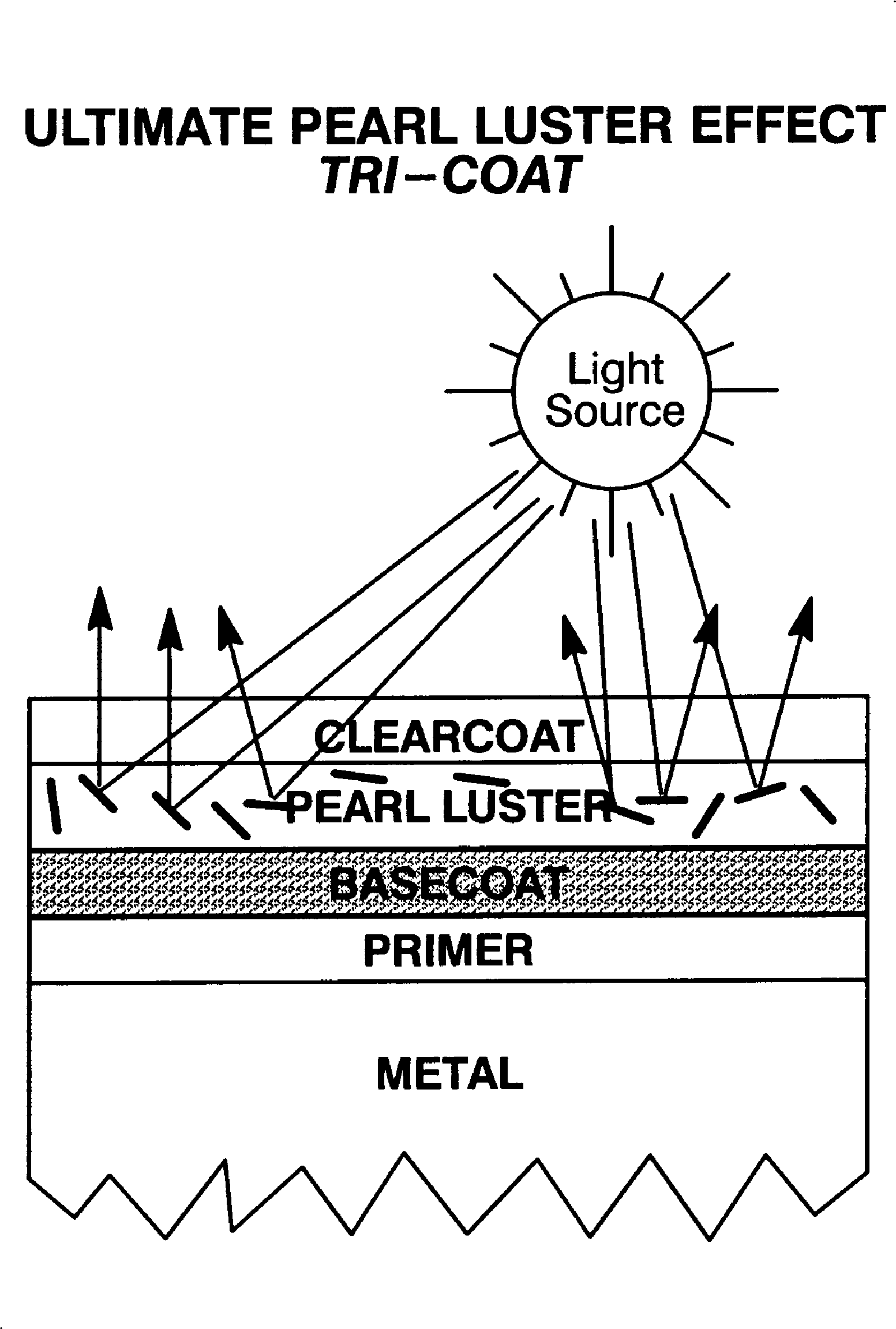

The Ultimate Pearl Luster Effect
Light striking the applied film of titanium dioxide on the flakes of mica creates the pearl luster effect by allowing the light to deflect at different angles. The light deflection determines the ultimate pearl luster effect you see.
The repair of these whit pearl colors requires different techniques and a different application process. Many of the conventional application techniques used on basecoat/clearcoat metallic colors do not apply when repairing a tri-coat finish.
The color is affected as follows:
Theoretically, when a metallic paint film is applied wet as it would be at lower air pressure and lower reduction, the aluminum flake settles deeper in the paint film and is surrounded by the color pigment causing a darker appearance. The color reacts in the opposite when the variables are reversed.
The theory does not apply to the white pearl tri-color system. The white basecoat is a solid material, therefore, will not be sensitive to the same variables that affect metallic colors. On the other hand, the pearl coat (or mid-coat) is very sensitive to film build. For this reason, a let-down panel should be used to determine the number of pearl coats required to match the OEM finish. This tool should be made prior to starting a repair. The let-down panel is used to match paint on the repair vehicle.
The let-down panel should be used as an aid to determine the appropriate number of pearl coats (mid-coats) that will be necessary to achieve a proper color match. This is done by comparing the various pearl coat film build areas on the let-down panel adjacent to the repair area, prior to starting the repair. It can be made in the following manner, refer to the illustration on the facing page.
The let-down panel should illustrate five different film builds of pearl coat.Important
The successful repair of tri-coat finishes will depend upon the painter's repair technique and their experience with these colors. Remember, all tri-coat colors are designed to be repairable.
When selecting and using materials:
The success of a paint repair depends upon:
The pearl luster is very sensitive to film build. As the film build of the pearl
luster coat increases, the color becomes darker. If the pearl luster becomes too dark
to blend into the adjacent areas, reapplication of the white base coat followed by
pearl luster coats will be required.Important
Paint repair techniques for the tri-coat finishes consist of the following options:
If product containing isocyanates are used, it is mandatory that adequate respirator
protection be worn. Examples of such protection are: air line respirators with full
hood or half mask. If not available, use a vapor/particulate type respirator, that
the respirator manufacturer recommends as effective for isocyanate vapor and mist
(unless local regulations prevail). Such protection should be worn during the entire
painting process. Persons with respiratory problems or those allergic to isocyanates
must not be exposed to isocyanate vapors or spray mist.Caution
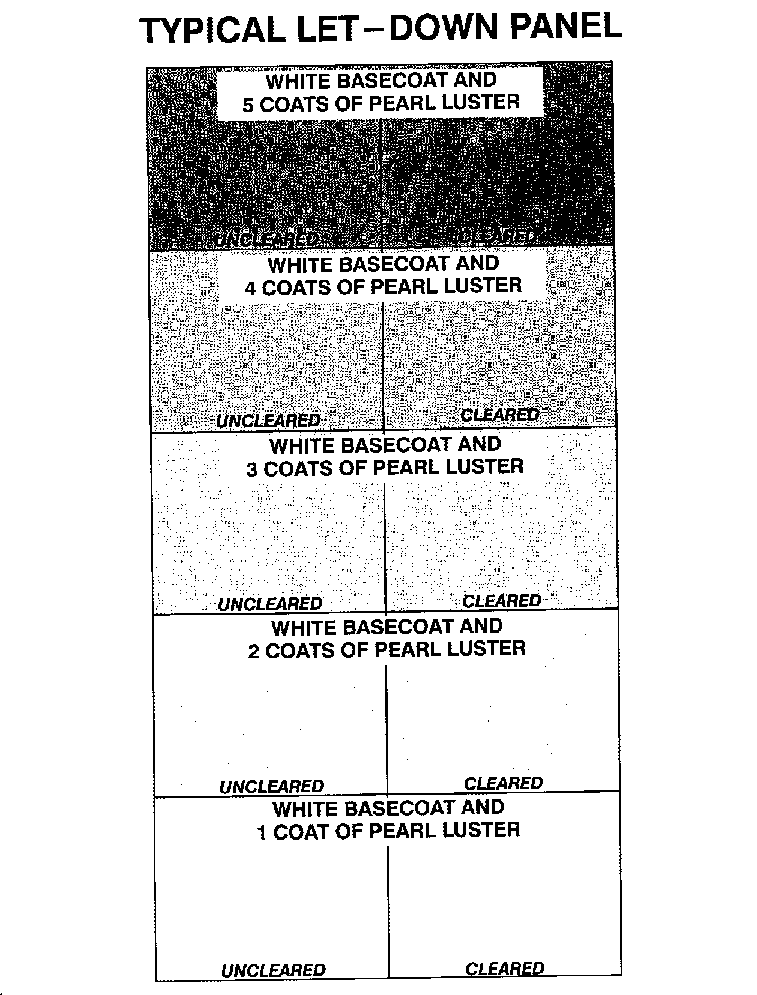

Use standard repair procedures for component panel repair. Sand, prime and compound the same as for any paint operation.


For best results, light color primers or sealers should be used under the base
white coat.Important
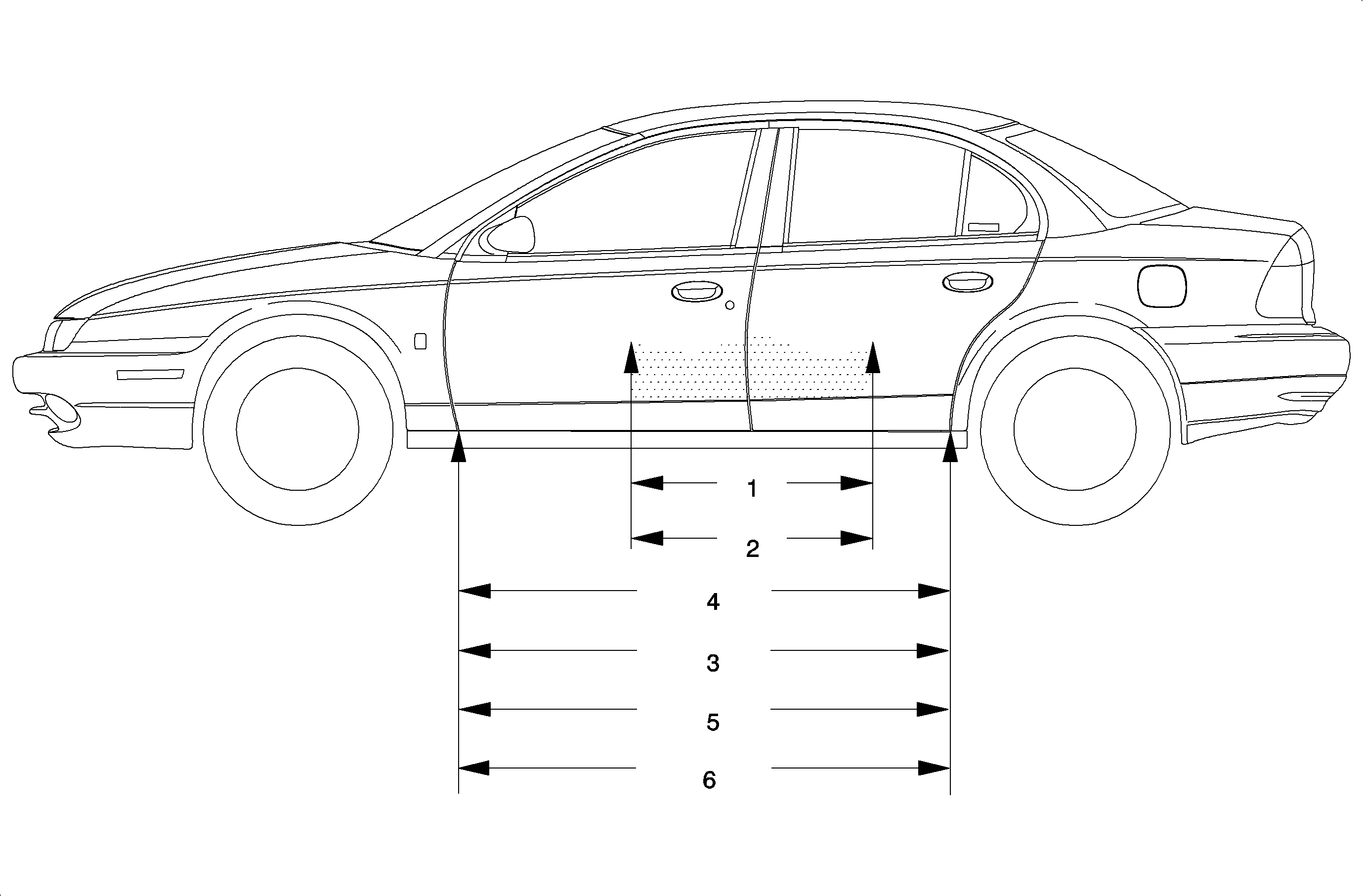

For best results, light color primers or sealers should be used under the base
white coat.Important
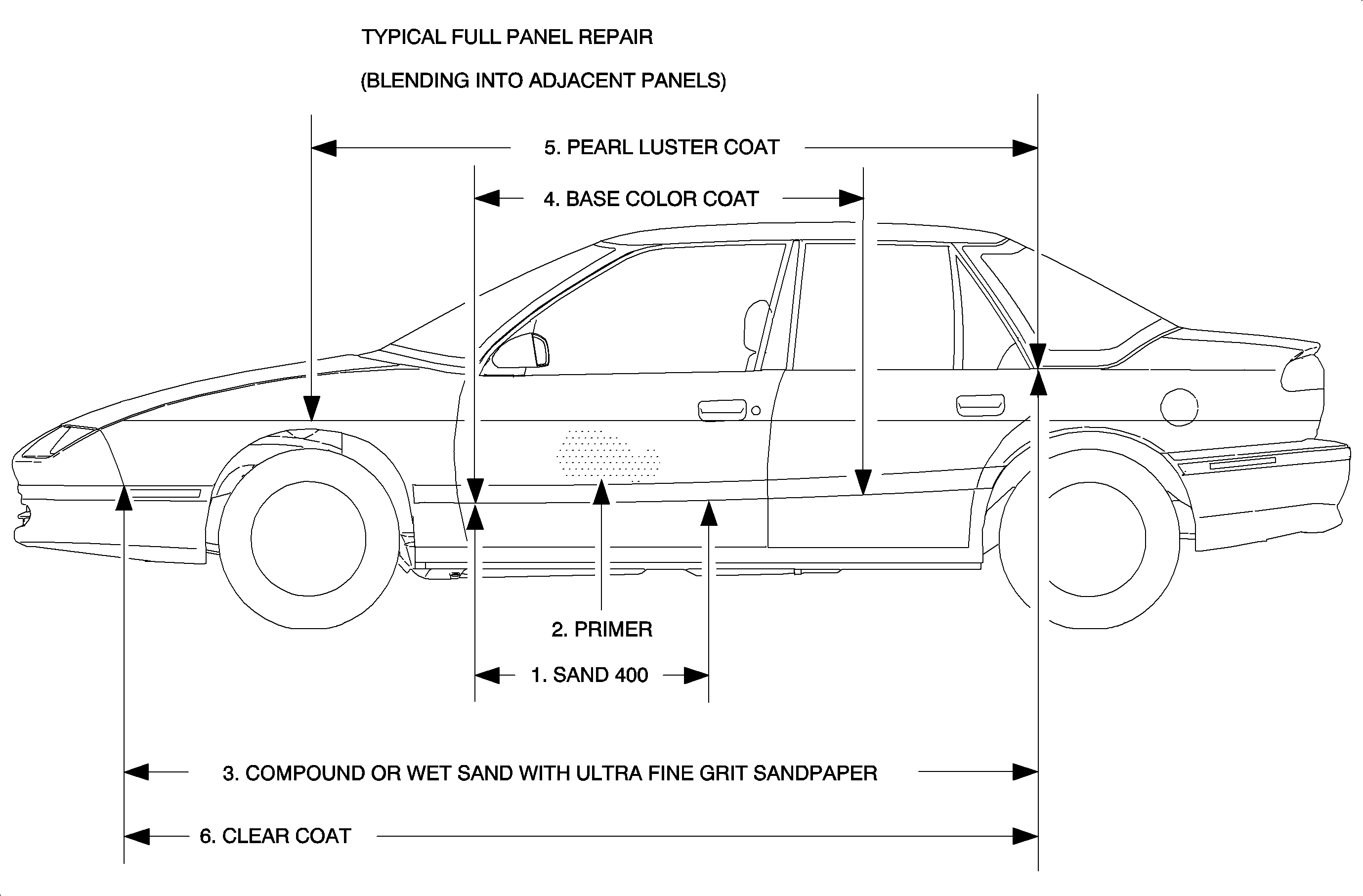

For best results, light color primers or sealers should be used under the base
white coat.Important
|
GM bulletins are intended for use by professional technicians,
NOT a "do-it-yourselfer". They are written to inform these
technicians of conditions that may occur on some vehicles, or to
provide information that could assist in the proper service of a
vehicle. Properly trained technicians have the equipment,
tools, safety instructions, and know-how to do a job properly and
safely. If a condition is described, DO NOT assume that the
bulletin applies to your vehicle, or that your vehicle will have
that condition. See your GM dealer for information on whether
your vehicle may benefit from the information. |

|
WE SUPPORT VOLUNTARY TECHNICIAN CERTIFICATION |
© Copyright General Motors Corporation. All Rights Reserved.